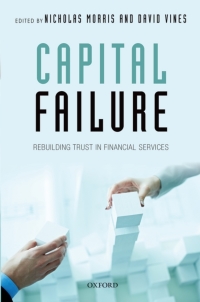Question
Du Pont Ratio Analysis Return on Common Equity ROCE = CI/AvgCSE 3.73% (46.44%) 26.48% 20.51% Change (50.17%) 72.93% (5.97%) Return on Net Operating Assets RNOA
| Du Pont Ratio Analysis | |||||||
| Return on Common Equity | |||||||
| ROCE = CI/AvgCSE | 3.73% | (46.44%) | 26.48% | 20.51% | |||
| Change | (50.17%) | 72.93% | (5.97%) | ||||
| Return on Net Operating Assets | |||||||
| RNOA = OI(after-tax)/AvgNOA | 4.57% | (7.49%) | 5.58% | 5.79% | |||
| Change | (12.05%) | 13.07% | 0.21% | ||||
| First-Level DuPont Break-Down | |||||||
| FLEV = AvgNFO/AvgCSE (AvgNFA/AvgCSE) | 18.78% | 252.63% | 920.23% | 718.57% | |||
| NBC = NFE/AvgNFO | 9.04% | 7.93% | 3.31% | 3.74% | |||
| Spread = RNOA - NBC | (4.47%) | (15.42%) | 2.27% | 2.05% | |||
| ROCE = RNOA + [FLEVxSpread] | 3.73% | (46.44%) | 26.48% | 20.51% | |||
| Second-Level DuPont Break-Down | |||||||
| PM = OI(after-tax)/Sales | 1.37% | -4.99% | 5.37% | 5.00% | |||
| AT = Sales/AvgNOA | 3.33 | 1.50 | 1.04 | 1.16 | |||
| RNOA = PMxAT | 4.57% | -7.49% | 5.58% | 5.79% | |||
| Break-Down of RNOA by Category of OI | |||||||
| Core OI from Sales (after-tax)/AvgNOA | (9.58%) | (1.89%) | 1.18% | 0.74% | |||
| Core Other OI (after-tax)/AvgNOA | 15.48% | 6.00% | 4.64% | 5.45% | |||
| Unusual OI (after-tax)/AvgNOA | (1.26%) | (11.59%) | (0.26%) | (0.44%) | |||
| Operating OCI (after-tax)/AvgNOA | (0.07%) | (0.01%) | 0.03% | 0.04% | |||
| RNOA = sum of above | 4.57% | (7.49%) | 5.58% | 5.79% | |||
D2 RNOA interpretation
Explain the operation factors/reasons for changes in RNOA over the year period FY19-FY22. You will need to research what happened to the company over this period to understand the major causes of changes in RNOA (e.g. the company opened ten new stores, driving an increase in sales (2022 Annual Report)). Refer to your calculations in D1 to support your answer, e.g. the breakdown of RNOA into PM and ATO. Your explanations must be supported by evidence. Make sure to include in-text references or footnotes to your sources of information. Make sure to provide answer in your own words.
D3 ROCE interpretation
Consider the first-level break-down: ROCE = RNOA + FLEV x SPREAD. How does financial leverage affect the companys ROCE over the three-year period FY19-FY22? Has financial leverage increased or decreased ROCE compared to RNOA? Why? If there have been significant changes in financial leverage, discuss why they occurred. Make sure to assess and discuss the effects that changes in accounting standards may have had. Your explanations must be supported by evidence. Make sure to include in-text references or footnotes to your sources of information. Make sure to provide answer in your own words.
Step by Step Solution
There are 3 Steps involved in it
Step: 1

Get Instant Access to Expert-Tailored Solutions
See step-by-step solutions with expert insights and AI powered tools for academic success
Step: 2

Step: 3

Ace Your Homework with AI
Get the answers you need in no time with our AI-driven, step-by-step assistance
Get Started


